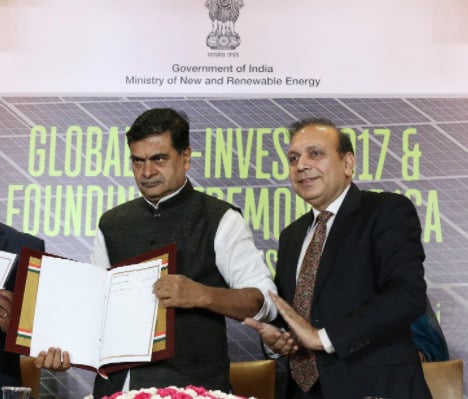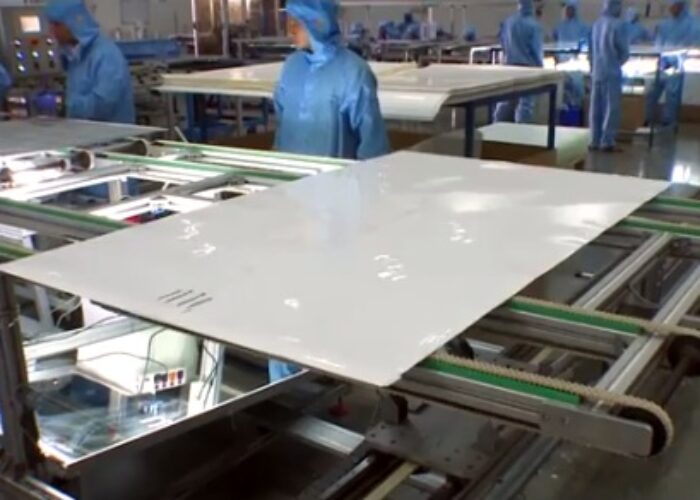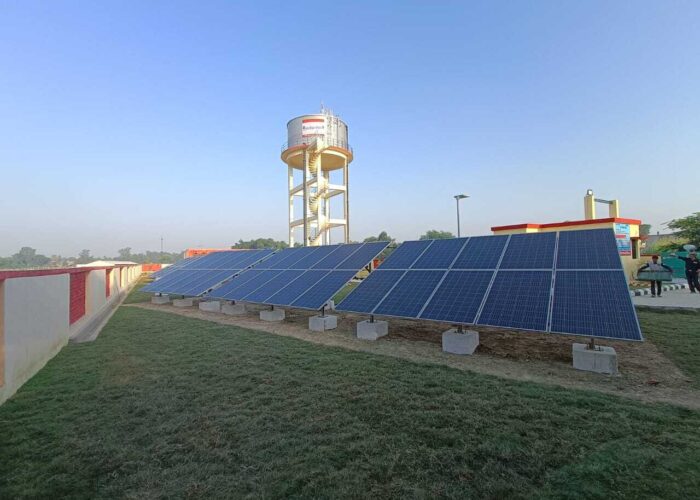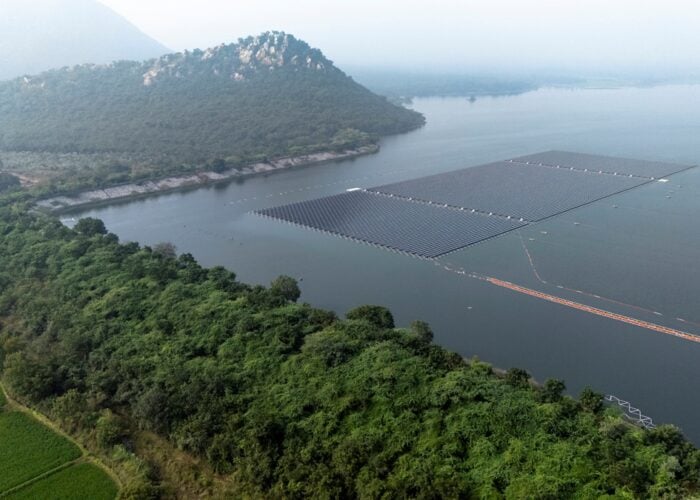
India has announced plans for an unprecedented solar procurement regime that aims to tender 20GW in 2017/18, followed by another 30GW in each of the two following years, but analysts have described the policy as “completely unrealistic”.
Anand Kumar, secretary Ministry of New & Renewable Energy (MNRE), said that India would tender 20GW of solar park capacity in the current fiscal year, of which 3.6GW had already been bid out, in its latest attempt to ramp up efforts to reach the 100GW by 2022 solar target.
Try Premium for just $1
- Full premium access for the first month at only $1
- Converts to an annual rate after 30 days unless cancelled
- Cancel anytime during the trial period
Premium Benefits
- Expert industry analysis and interviews
- Digital access to PV Tech Power journal
- Exclusive event discounts
Or get the full Premium subscription right away
Or continue reading this article for free
The main tendering in the current fiscal year would follow the timeline below:
- 3GW in December 2017
- 3GW in January 2018
- 5GW in February 2018
- 6GW in March 2018
These eye-watering numbers could give some confidence to the industry, which has been desperate for a steady roll-out of tenders and Requests for Proposals (RfPs) for much of 2017, after the break-neck speed of tendering in the two preceding years ground to a halt. Indeed, the highly ambitious policy would involve a six-fold increase on the amount of tenders completed in the last year.
However, Vinay Rustagi, managing director of consultancy firm Bridge to India, told PV Tech that MNRE has a new administration led by a new minister and a new secretary, who are “clearly under pressure” to hit the renewable energy targets and address the on-going challenges.
He added: “There is clearly no detail to how the government is going to actually fulfil or implement such an ambitious roll out and it just seems like this is a simplistic plan – a 'filling the gap' kind of plan rather than something which takes into account the various challenges on the ground and tries to solve them one by one to then achieve the 175GW target.”
Back in September, Bharat Reddy, deputy general manager, Solar Energy Corporation of India (SECI), told PV Tech that SECI was ready in waiting to issue a huge number of tenders, but it had been held up by a lack of certainty in government policy. He said as soon as the government had clarified its policies around tendering, SECI was ready to start issuing tenders immediately, but at the time the tender schedule was tiny in comparison to the new goals.
Looking back on previous years, Reddy added: “Once we got all the pressure from the Ministry, every day we used to release one tender. We can do that again – otherwise we cannot reach the target.”
A representative of a major India-based EPC firm also told PV Tech: “What everybody needs in this industry right now is a well-oiled RfP machine, because you are seeing this start-stop, start-stop in terms of new bids coming out and that gets frustrating for development platforms, because they wait with such a lot of overheads and people and manpower assuming that bids are going to be in good frequency.”
He said the 175GW target is still on track and all it requires is ramping up the frequency of solar park tenders. He claimed that the challenge had not been acquiring land, but rather the collaborations between several different entities, such as state governments, multiple agencies and the central government itself.
He added: “Hopefully this new minister with a bureaucratic background will be able to tie all these [loose] ends.”
Indeed last week’s detailing of India’s renewable energy roadmap by power minister R. K. Singh, who has been in the job for less than three months, would suggest that MNRE has taken heed of this advice on how to guarantee reaching the 100GW target, but as is always the case, these are just numbers and whether the new tendering policy gets implemented successfully remains to be seen.
India’s solar industry is currently in its first phase of real uncertainty under the Modi government, with the imposition of the GST tax and the looming anti-dumping duty threat. Many feel this is a temporary period of stasis. However, if the industry can run into such troubles with a comparatively smaller tendering phase, then the new hugely ambitious tendering will require an incredibly smooth rollout without interruption for a significant number of years. Moreover, all the well-publicised troubles from Discom financial woes to grid instability are still present.
Rustagi said: “Minister has basically said the RPO [Renewable Purchase Obligation] is going to be enforced strictly, by all states, but clearly the central government has no powers to enforce RPO, which remains the subject of the local regulators and state governments. So unless that happens, there is no way that this new plan can be achieved, because what we are grappling with right now is there is too much power in the system. Discoms are unwilling to buy new power – forget renewable power – so in that situation, the states tendering out 19-plus-gigawatts of power is completely unrealistic.”
Regarding clarity on GST rates for solar equipment, Anand Kumar said that the MNRE is still in talks with the Ministry of Finance and the issues would be resolved in the next 7-10 days.
Manufacturing and other technologies
R.K. Singh said that MNRE is also looking at the potential for floating solar projects on dams, hybrid wind and solar projects, as well as offshore wind, which could add a further 10GW of capacity. As part of this, the ministry has already surveyed the Bhakra Nangal dam for floating solar power plants. The country also watched closely the recent completion of a 500kW floating solar system built by Adtech at Wayanad in Kerala for the utility KSEB – the largest floating installation in India to date.
MNRE is also working on how to issue an expression of interest (EoI) for 20GW of PV manufacturing facilities. The government release did not make it clear whether this 20GW would be tied in with its downstream tendering programme through some kind of local equipment sourcing mandate. While the announcement lacked detail, such a policy will be of extreme interest to the industry as it awaits the outcome of the on-going anti-dumping investigation into imports of cells and modules from China, Taiwan and Malaysia. In a recent report, Bridge to India said that trade barriers alone would not help India’s domestic manufacturers. Instead trade duties would need a strong complementary manufacturing support policy to have lasting positive effects for local manufacturing.
Rustagi said that the minister was proposing a capital subsidy to companies setting up integrated manufacturing facilities and this will be given out on the basis of competitive auctions, Such manufacturers would then be able to use their own modules to develop their own solar projects. A tender document is expected in the next few days, but Rustagi said details so far are “wishy washy”.
R. K. Singh said he was confident that the 175GW renewable energy by 2022 target would be achieved comfortably, partly through states ensuring that their distribution companies (Discoms) remain financially viable, a puzzling comment given the recent spate of incidences involving Discoms renegotiating solar PPAs. However, Singh did note that PPAs should be mandatorily honoured.
Kumar also said that another 8GW of wind will be tendered this year, of which 5GW has already been bid out.






